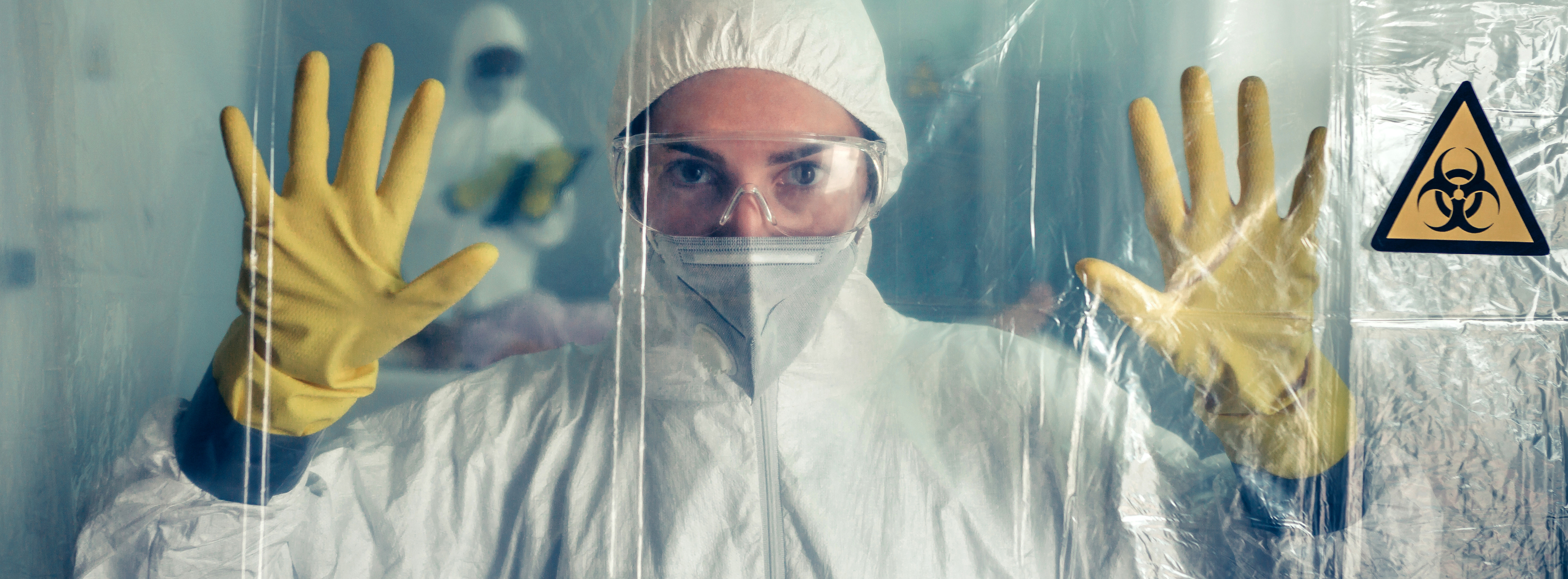Let's talk about lab water
Let's talk about lab water

The type of research you plan to undertake is an incredibly important factor to consider when setting up a new lab, as the nature of the samples or reagents may require it to be compliant to specific biosafety levels (BSLs). These levels – ranked one to four – are defined based on the organisms or agents that are being handled; a basic lab setting using low risk microbes that pose little to no threat to lab workers and the environment generally only require BSL-1 measures, whereas a specialised facility that deals with exotic or potentially deadly infectious agents – like Ebola – would need a BSL-4 designation. BSL-1 labs are widespread throughout the world, whereas high level BSL-3/4 laboratories are less common, but provide the basic supporting platform for public health, scientific research, technical bioproduction, and national biosecurity.
We have seen the continuous emergence of new viruses, as well as mutations of existing ones, over the past two decades, including Ebola, severe acute respiratory syndrome (SARS), avian influenza A (H5N1) and Rift Valley fever. These infectious diseases pose serious threats to public health and global economies, and the surveillance of these viruses – which also contributes to our understanding of how they work – is critically important so that we can learn how best to prevent and control their spread, and minimise the impact of an epidemic.
The recent spread of novel coronavirus SARS-CoV-2 has highlighted the urgent need for more laboratories to be prepared for handling dangerous pathogens in order to develop effective methods to prevent, diagnose and treat them. The Centers for Disease Control and Prevention (CDC) has outlined biosafety guidelines specific to SARS-CoV-2,1 suggesting that virus isolation and characterisation must be performed within a BSL-3 lab, and the recommendations provided by the World Health Organization (WHO) are in line with this proposal.2
Following the SARS epidemic in 2003, the government of China invested in high BSL research capabilities to prepare for, and respond to, future infectious disease outbreaks.3 This led to the construction of a BSL-4 lab – the Wuhan National Biosafety Laboratory – that meets the national and international standards for diagnosing, researching and developing antiviral drugs and vaccines for highly pathogenic agents, as well as preserving samples for future scientific research. This remains the only BSL-4 lab in China, alongside a handful of BSL-3 labs that are currently disproportionally distributed across the country.4
The Chinese government has recently instituted a policy to radically increase the number of BSL-3/4 labs in provinces around China, forming a network of BSL labs that can efficiently respond to potential public health emergencies. The aim is to increase the number of BSL-3 or higher labs at least ten-fold to expand the country’s research capabilities for working with these dangerous pathogens. Common requirements in a BSL-3 laboratory include use of standard PPE, access to hands-free sinks and eyewash stations near exits, sustained directional airflow to draw air into the laboratory from clean areas towards potentially contaminated areas, and self-closing, locking doors with access away from general building corridors. Access to a BSL-3 laboratory is restricted and controlled at all times. In addition to BSL-3 requirements, BSL-4 labs must abide by extra containment guidelines, such as personnel changing clothing before entering and showering upon exiting, decontamination of all materials after use, access to class III biological safety cabinets, and the use of full body, air-supplied, positive pressure suits.
When setting up a new BSL-3/4 lab, it’s important to invest in the most appropriate equipment for the work you’re performing, as the instruments you purchase will determine the type and quality of data your lab generates. Water quality can have a tremendous impact on the quality of results, particularly for modern molecular biology techniques, such as PCR, DNA/RNA sequencing, DNA microarrays and electrophoresis.
The acquisition of genomic data using techniques like next generation sequencing (NGS) is now vital for viral surveillance, offering valuable insights into the way viruses behave and transmit between individuals, as well as their origins and evolution. The presence of DNase and RNase enzymes in laboratory water represents a major problem for these experiments, damaging both samples and nucleic acid templates needed for amplification. This makes characterisation difficult, or potentially impossible, rendering the experimental results meaningless. It is therefore essential to avoid introducing nuclease contamination during the experimental procedure. Use of highly pure water – with nuclease levels below the limit of detection – is crucial when preparing samples, buffers and reagents for sequencing and genomics workflows.
While nucleases are the major consideration for genomic techniques, molecular biology methods are also affected by ionic contaminants, organic compounds and bacteria, which can all negatively impact results. Type I ultrapure laboratory water is therefore essential for BSL-3/4 labs. ELGA’s broad range of water purification systems helps laboratories worldwide to perform molecular biology and cell culture procedures, without worrying about water impurities. The company’s knowledgeable team can help customers to determine the level of water purity required for their applications, and offers a wide range of water purification systems to suit the needs of individual labs, each with its own advantages.
These kinds of systems are already supporting BSL-3/4 laboratories around the world with their groundbreaking research, and will continue to enable these critical experiments to help to protect us against novel and re-emerging diseases for years to come.
References: